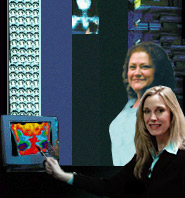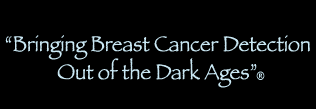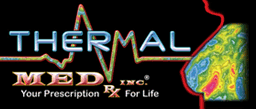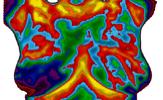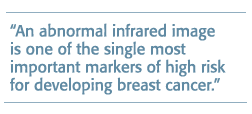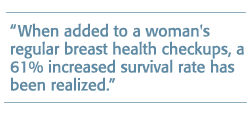Is Breast Thermography Safe?
Breast Thermography is very safe. There is no exposure to radiation or anything invasive about the test.
How is Breast Thermography different from a Mammogram?
Both tests are looking for completely different signs of breast cancer. Thermography looks for temperature changes which occur as a growing cancer alters the blood supply of the breast. Thermography identifies the physiology and chemical changes. Mammograms look for changes to the density of the tissues of the breast indicating the possible presence of a tumor. Mammography identifies the physical changes. The medical literature views both procedures as complimentary to each other.
Can I use Breast Thermography as an alternative to Mammography?
Although this may sound appealing at first, the best detection is to use a combination of thermography, mammography and physical examinations.
I have no family history and am not at high risk for breast cancer. Why should I have a thermogram?
Although family history is considered a risk factor, most women who develop breast cancer have no family history. A positive thermogram is considered the highest risk marker for the future development of cancer. It is 8 times more significant than a family history. Thermography can show if a woman or man may actually be at risk despite the lack of a family history of cancer.
I have a suspicious mammogram or felt a lump on my breast. Should I still have a thermogram?
Absolutely yes. The information provided from the thermogram can clarify the other findings ultimately helping your doctor make better decisions as the best way to manage the situation.
I have cancer and I am scheduled for surgery. What benefit is there to thermography this late in the game?
Thermography performed before and after a surgery can help evaluate the success of the procedure. Additionally, once a woman develops breast cancer, she is at higher risk to develop it again. It is imperative to protect the healthy breast.
Is special training required to perform Breast Thermography?
Yes. The IACT requires 25 hours in breast protocols and analysis in addition to a general certification as a clinical thermographer. Technician certification through the IACT includes breast imaging protocol. Make sure that the clinic has a certified thermology technician.
How much does the examination cost?
The fee depends on individual centers in different geographic regions.
There is some confusion regarding the use of different names for thermal imaging. Can you explain this?
Thermography is the most common term used to describe the procedure of thermal (heat) imaging. In simplest terms, thermography means "picture of heat". Since thermography is used in many other applications, the addition of the prefix "clinical" or "diagnostic" denotes the use of thermography in the health care field.
- Certain modern terms are used interchangeably for thermography: medical infrared imaging, electronic thermography, infrared thermography, telethermography, infrared imaging, thermal imaging, infrared thermal imaging, clinical thermography, etc.
- Since computers are routinely used to capture and analyze the infrared data, terms are inserted to note this: computerized thermography, digital thermography, computerized thermal imaging, computerized infrared imaging, computed thermal imaging, digital infrared thermal imaging, digital infrared imaging, etc.
The following are some risks for breast cancer:
- Women of all ages
- Prolonged use of oral contraceptives
- Synthetic hormone replacement
- Family history of breast cancer
- Obesity, sedantary lifestyle
- Smoking
- Consumption of refined sugar, artificial sugars, caffeine, and high fat diets
How can I lower my risk?
- Have a yearly THERMOGRAM
- Discuss options with your doctor about alternatives to birth control pills and synthetic HRT
- Maintain a healthy weight
- Exercise
- Limit alcohol consumption and caffeine, quit smoking, limit bad fats in your diet, and refined sugar
- Eat more fruits, vegetables, protein, and fiber
- Consume Omega-3 fatty acids, flax seed oil
- Consult with your doctor about natural supplements to reduce your risk
What should I do on the day of the test?
- Drink plenty of water
- Do not exercise 4 hours prior to the exam
- Avoid sun exposure for 5 days
- Do not use perfumes, skin creams, deodorants, powders, lotions or makeup
- Do not shave your underarms
- Do not drink alcohol
- Avoid treatments such as: chiropractic, physical therapy, acupuncture, heat or cold packs
- Do not touch or stimulate the breast area
- Do not bathe less than 1 hour prior to the exam
- If using pain medications, please avoid taking for 4 hours prior to the exam, if possible
Does my insurance cover the thermogram?
Depends on your insurance.
